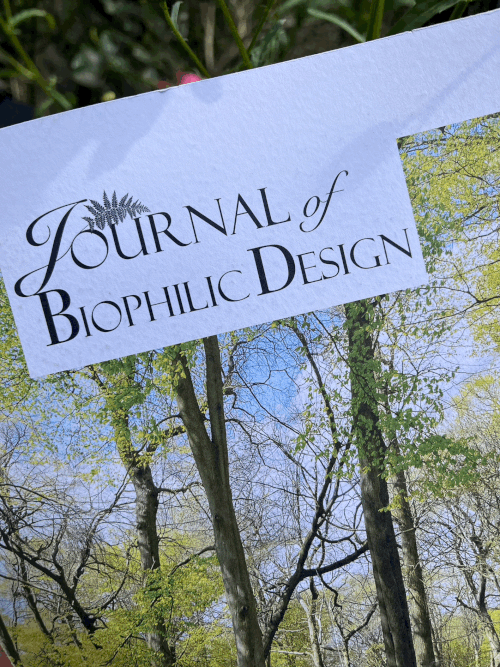Contributing Article, Journal of Biophilic Design, May 2025
12-05-2025The Vital Role of Light in Art and Wellbeing, by Giles Miller
In the world of art, light is not merely a means of visibility – it is an active and essential participant in the experience of any artwork. At Giles Miller Studio, light is a major consideration in every piece we create. Our philosophy embraces the idea that artworks should exist in perfect harmony with their surroundings, adapting to the perspective of the viewer and the ever-changing play of light throughout the day.
Light, whether natural or artificial, influences the way an artwork is perceived. Shadows, highlights, and reflections breathe life into the composition, creating a dialogue between the piece and its environment. We see light as a collaborator, shaping and evolving the way our works are experienced over time. It is this dynamic interaction that allows our work to transcend static form, becoming something that is felt as much as it is seen.Another cornerstone of our creative process is the incorporation of natural materials. The composition of natural materials such as wood, metal, or ceramics brings an inherent sense of calm and grounding to the viewer. These materials, when carefully and considerately composed, interact beautifully with light, casting dynamic shadows and subtle shifts in tone that change with the passing hours. This interplay between form, material, and illumination contributes to an artwork that is not static but fluid – an evolving visual and emotional experience.
Beyond materials and light, our studio’s approach is rooted in the arrangement of elements in a manner inspired by the fractals and biophilia found in nature. We often compose our works from masses of components, allowing nature’s influence to guide us in shaping them into cohesive, rhythmic patterns. This careful orchestration creates a sense of movement and depth, offering the viewer an emotional lift. The combination of organic materials, structured composition, and the vital role of light enhances the immersive quality of our artworks, making them more than just objects – they become experiences.
Artistic purpose, at least within our own studio’s practice, extends beyond form and aesthetics – it is about the human experience. Neuroscience has proven art’s ability to promote wellbeing, validating our mission to create works that positively impact those who engage with them. Art has the ability to communicate with and unite our senses, evoking emotions ranging from pleasure and awe to comfort and serenity. This sensory impact is something we study, channel, and perpetuate through our work. We call it Sensory Artistry.
Our artworks are designed to heighten awareness of the surrounding environment and one’s own emotions. Through careful composition, natural materials, and the transformative power of light, we create immersive experiences that go beyond visual appreciation. Light is the force that breathes life into these compositions, altering their appearance and emotional resonance throughout the day.
This dynamic relationship between light, material, and structure is what makes our work effective in fostering wellbeing. By designing artworks that evolve with the light, we encourage moments of reflection, tranquility, and emotional upliftment. Just as natural light shifts with the seasons, our works respond to their environment, forming a living, breathing connection between art and its audience.
Ultimately, light is not just an external factor – it is an intrinsic force that transforms and elevates our experience of art. Through sensory artistry, we seek to harness this power to create artworks that are not only visually captivating but deeply enriching to the human spirit.
It follows that the significance of light extends far beyond the realm of art. It is a fundamental consideration in any designed space – whether architectural, interior, or landscape design – where the goal is to foster a sense of wellbeing. The same principles that guide our work in the studio – harmony with the surroundings, interaction with changing light, and the emotional resonance of materials – can be applied to all environments where people live, work, and gather.
A well-designed space that thoughtfully integrates light can transform mood, enhance focus, and promote relaxation. Natural light, in particular, has been shown to improve mental health, increase productivity, and establish a deeper connection between individuals and their environment. Architects, designers, and urban planners must recognise light as more than a functional necessity; it is a medium through which space is activated and experienced.
By embracing the power of light in our surroundings, we can create environments that uplift, inspire, and heal. Whether through art, architecture, or design, light remains a fundamental force – one that shapes our emotions, our interactions, and ultimately, our sense of wellbeing.
References:
Natural Light in Interior Architecture: Enhancing Mental Health by Alireza Negarestan
Viewing Art Boosts Wellbeing by Fiona Tyrell
https://en.wikipedia.org/wiki/Neuroesthetics
